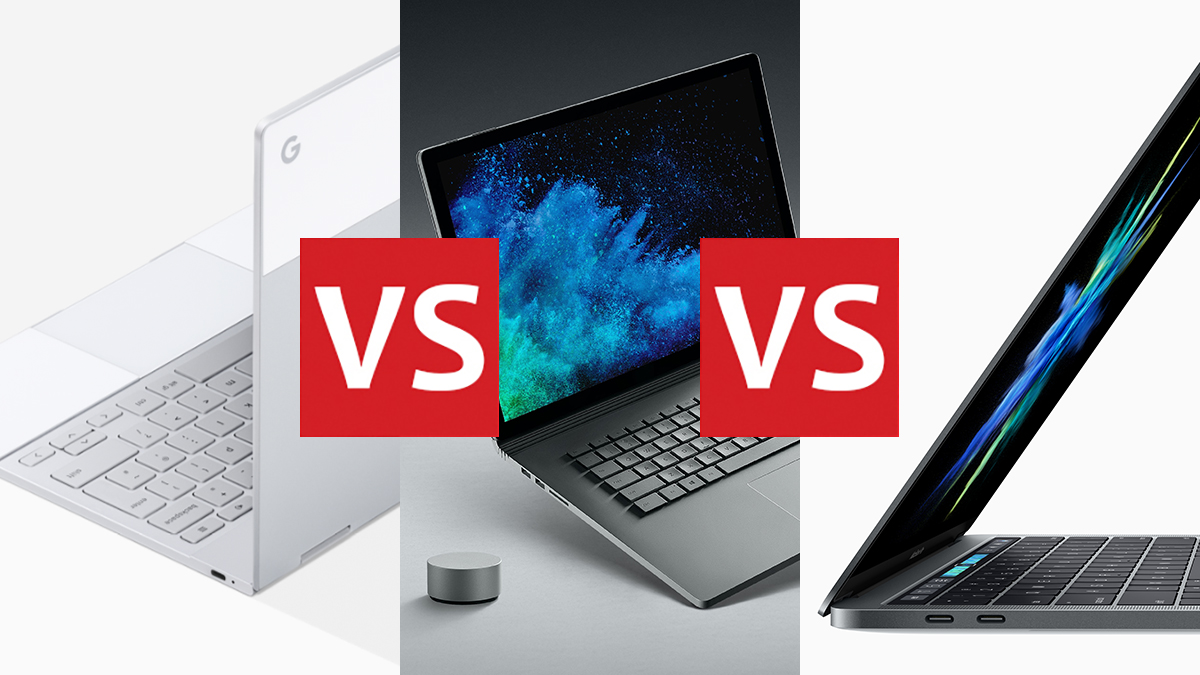

With Google rebooting its own-brand Chromebook line, and Microsoft showing an increasing interest in making its own hardware over the last couple of years, we've got a situation where Google, Microsoft and Apple all have flagship laptops on the market.
So which one of these high-end machines is going to be the right pick for you? Here we'll guide you through the latest specs and prices for these devices - focusing on the most recent models - so you can come to an informed decision about your next computer.
Choosing an OS
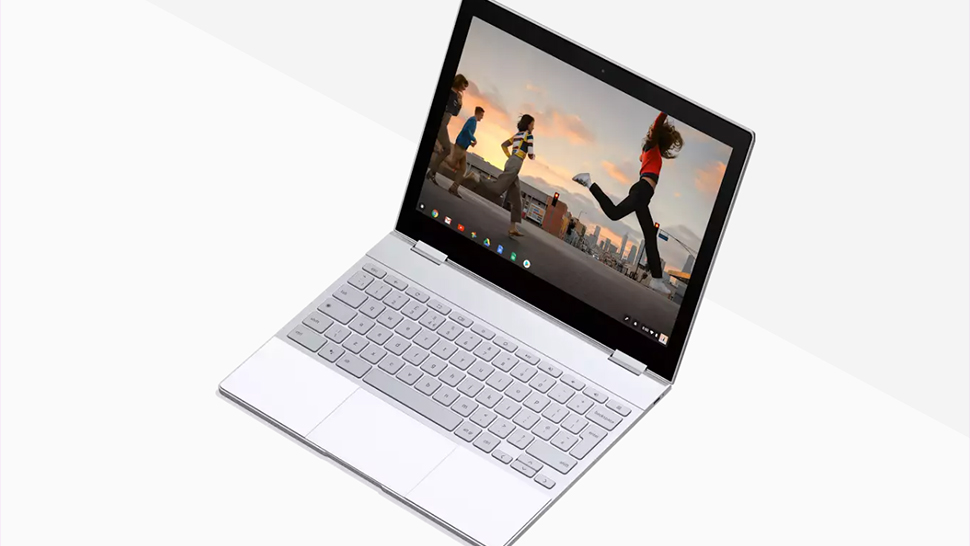
Processor power and screen size might grab a lot of the attention when it comes to weighing up laptops, but the on-board software is going to make just as much of a difference to your computing experience. You may have already settled on one of these operating systems for life, but each one has its own pros and cons.
Chrome OS on the Pixelbook (above) is essentially just Chrome - that means you can't install desktop apps or do much offline, but it also means the system is lightweight, secure, and unlikely to slow down over time. Note that many Chromebooks, including the Pixelbook, can now run Android apps as well, giving you access to the likes of Instagram, Netflix (complete with offline downloads), Spotify, and all those other apps you use every day on your phone.
We don't have space for a full Windows 10 vs macOS High Sierra head-to-head here, but you're probably familiar with the arguments by now. Apple's OS is slick and powerful, and comes with a ton of included (Apple) software, while Microsoft's OS is just as impressive in the performance and features stakes, and a better choice for gamers or those working with non-Apple hardware.
Power and specs

The Google Pixelbook comes in one size, with a 12.3-inch, 2,400 x 1,600 pixel screen (235 ppi). Under the hood you can have either an i5 or i7 processor, together with 8GB or 16GB of RAM. In terms of on-board storage, meanwhile, your choices are a 128GB, 256GB or 512GB solid state drive.
Microsoft's very latest Surface Book - the Surface Book 2 (above) - gives you a choice of a 13.5-inch or a 15-inch screen, both with resolutions of 3,000 x 2,000 pixels (267 ppi or 240 ppi). Again you've got a choice of i5 or i7 processors as well as 8GB or 16GB of RAM, but in this case the on-board storage choices are 256GB, 512GB or a whole 1TB.
Sign up to the T3 newsletter for smarter living straight to your inbox
Get all the latest news, reviews, deals and buying guides on gorgeous tech, home and active products from the T3 experts
Finally, Apple's newest MacBook Pro (a selected number of older models are still on sale) comes with either a 13.3-inch, 2,560 x 1,600 (227 ppi) screen, or a 15.4-inch, 2,880 x 1,800 (220 ppi) screen. Intel's i5 and i7 CPUs are again on offer, with the other choices 8GB or 16GB of RAM, and 128GB, 256GB, 512GB, 1TB or 2TB of SSD storage.
Options and prices
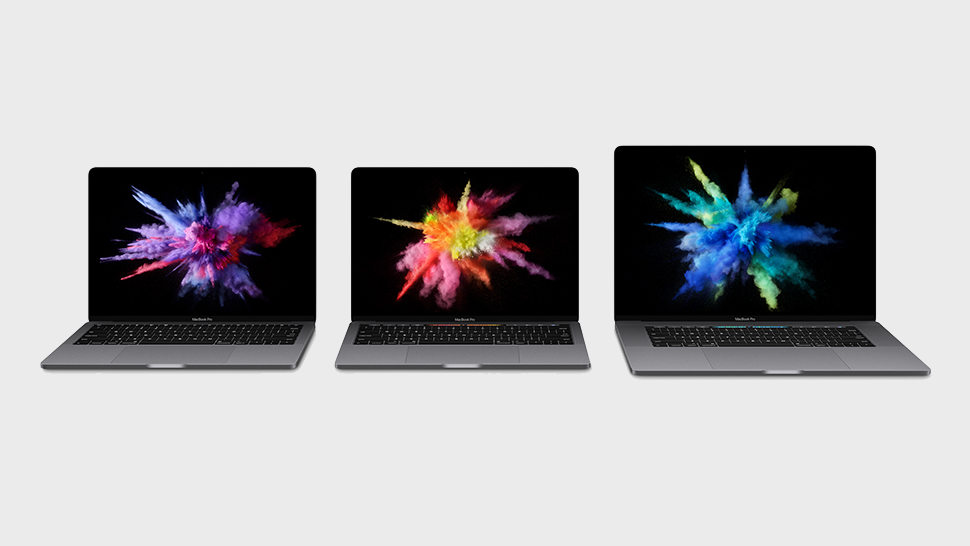
With each of these laptops you've got a choice of configurations to try and get your head around - even the Pixelbook has three options to pick from. Prices for Google's laptop start at £999/$999 and go up to £1,699/$1,649. A Pixelbook Pen stylus can be yours for £99/$99.
For the Surface Book 2, your price range is £1,499/$1,499 up to an eye-watering $3,299 in the US, with the top-end UK pricing to be confirmed but likely to be similar in terms of a direct dollars-to-pounds conversation. If you want a Surface Pen as well to scribble on screen, that's an extra £99.99 or $99.99.
As for the MacBook Pro (above), your buying options straight from Apple go from £1,249/$1,299 for the cheapest 13.3-inch model up to £3,969/$4,199 for the most expensive 15.4-inch model (that 2TB of SSD storage is really, really pricey), stopping at a lot of points in between. The Touch Bar is optional on the 13.3-inch model.
In other words, you're going to be paying a lot for any of these laptops, and if you've got money to burn you can really trick them out.
The final verdict

With so many configurations and prices to pick from, it's hard to do an overall comparison, but whatever models you're looking at, you're guaranteed to get a lot of power. All three of these laptops will zip through whatever tasks you give them.
All three feature bright, crisp screens, though if you want a bigger, 15-inch model your choices are restricted to Microsoft or Apple. If you want the 2-in-1 tablet transforming option, meanwhile, or want to use a stylus, then you have to go for hardware from either Google or Microsoft. The MacBook Pro doesn't have a touchscreen, but it does have a Touch Bar, which works with an increasing number of apps.
With the specs and pricing quite similar, you're back to what we mentioned at the start - your choice of OS. Chrome OS is lightweight and fast but will only suit a particular kind of user, while your preference for Microsoft or Apple hardware may well come down to the other devices you're using and the devices you've used in the past.
The good news is there's a high-powered, sleek-looking laptop out there for everyone, whether you prefer Google's mix of Chrome and Android, the desktop-and-tablet hybrid that is Microsoft's Windows 10, or the aesthetics and power of Apple's hardware and software.
Dave has over 20 years' experience in the tech journalism industry, covering hardware and software across mobile, computing, smart home, home entertainment, wearables, gaming and the web – you can find his writing online, in print, and even in the occasional scientific paper, across major tech titles like T3, TechRadar, Gizmodo and Wired. Outside of work, he enjoys long walks in the countryside, skiing down mountains, watching football matches (as long as his team is winning) and keeping up with the latest movies.
-
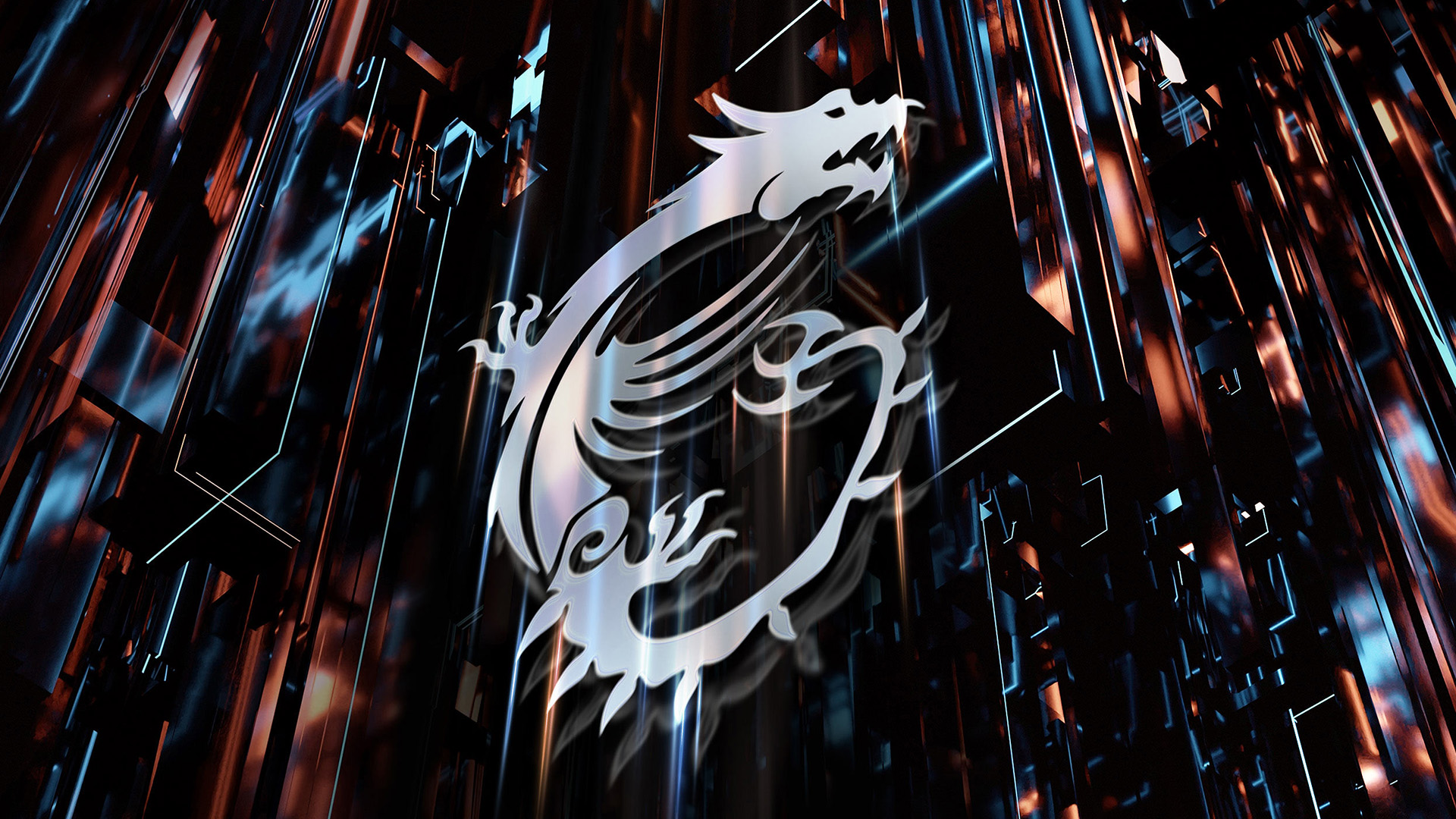 "Nvidia 5090s draw more power, but I don’t think that's the story" – MSI says 50-series laptops could change everything
"Nvidia 5090s draw more power, but I don’t think that's the story" – MSI says 50-series laptops could change everythingI talked to MSI about its new range of 50-series laptops
By Max Freeman-Mills
-
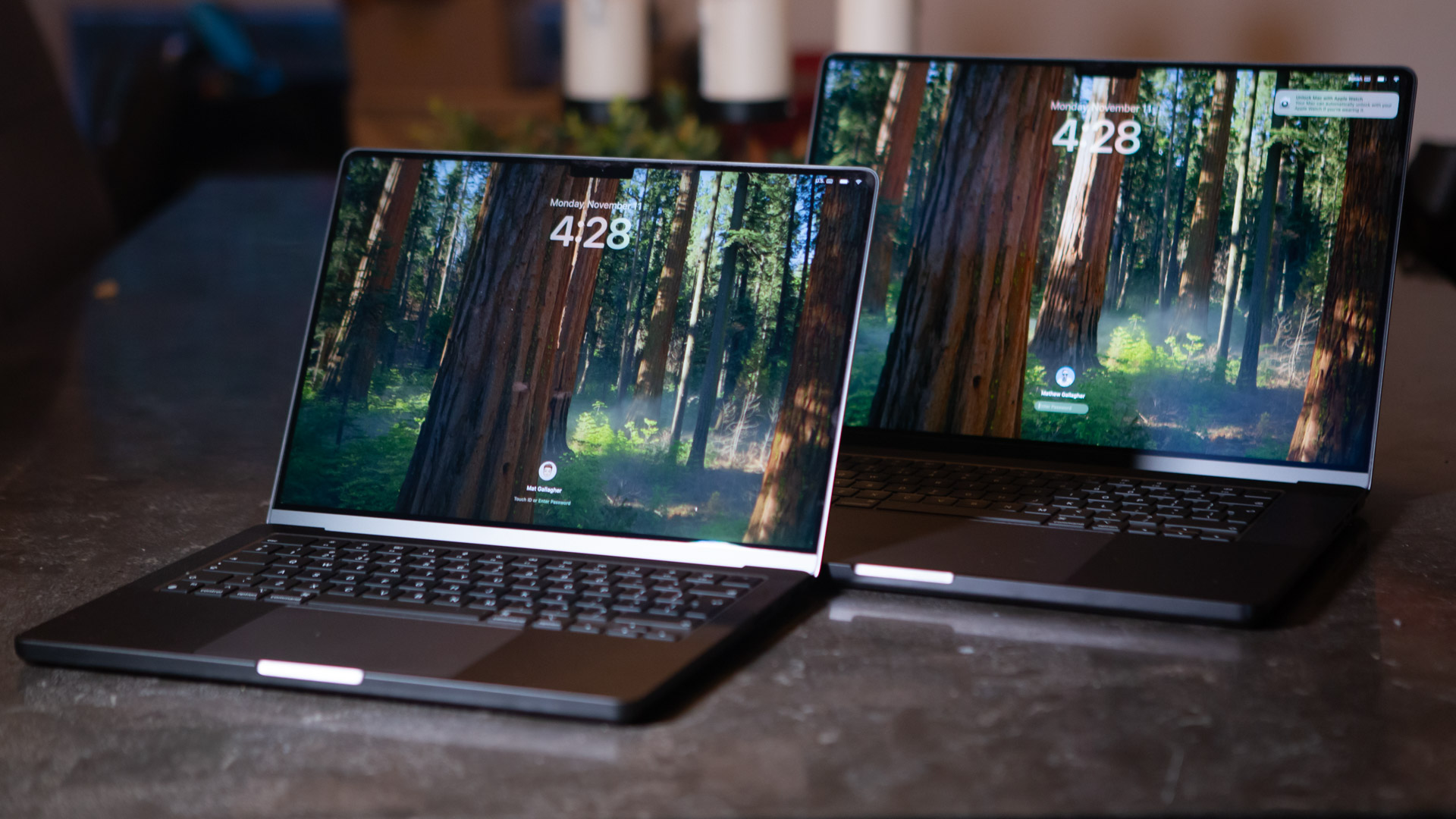 Here's when the first OLED MacBook Pro might become available
Here's when the first OLED MacBook Pro might become availableBut don't hold your breath just yet
By Britta O'Boyle
-
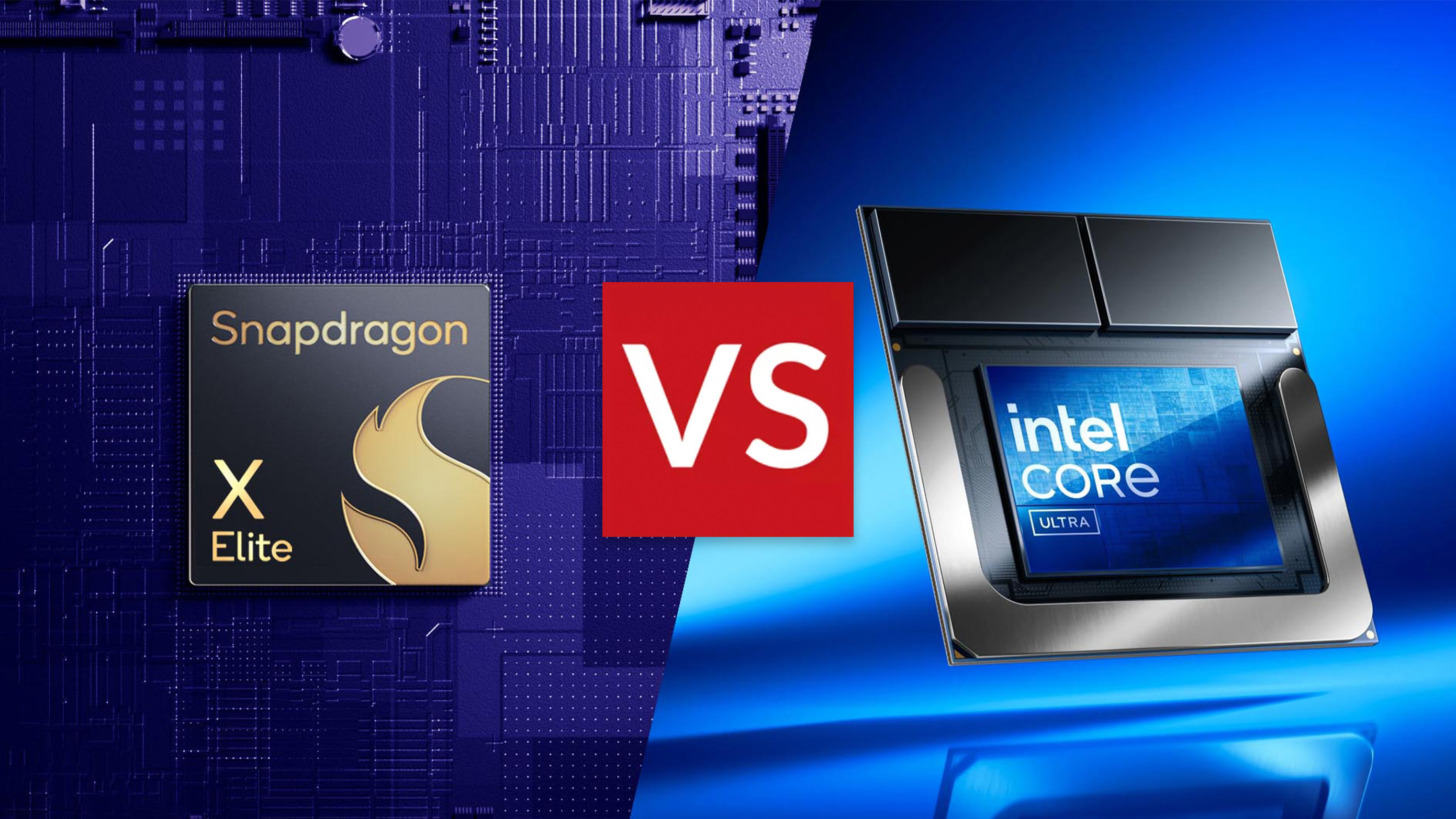 Qualcomm Snapdragon X Elite vs Intel Core Ultra Series 2: Which is best for AI laptops and why?
Qualcomm Snapdragon X Elite vs Intel Core Ultra Series 2: Which is best for AI laptops and why?These AI laptop brands are going to split any crowd – but which should you buy?
By Andrew Williams
-
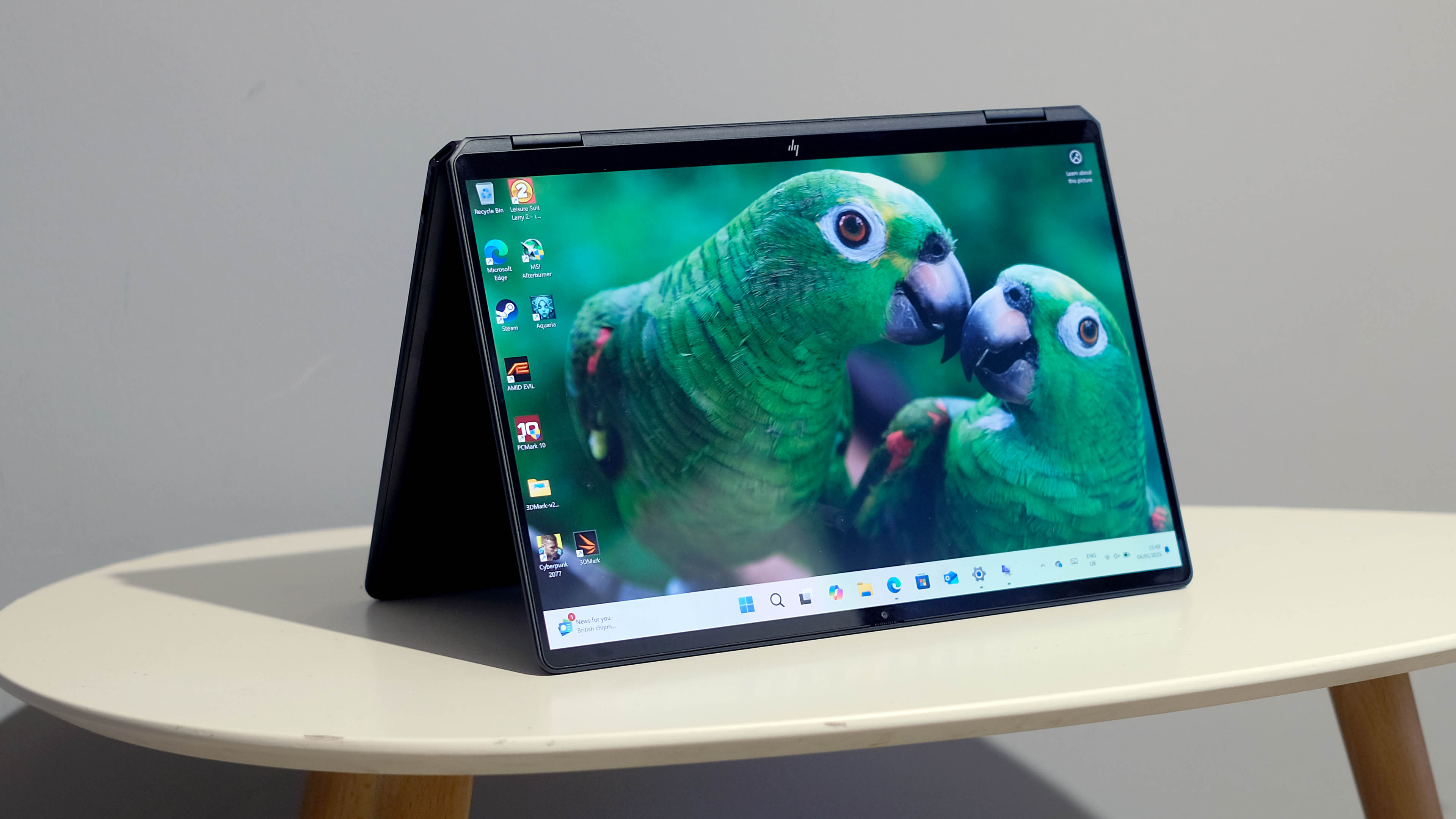 HP OmniBook Ultra Flip review: Ultrabook brilliance
HP OmniBook Ultra Flip review: Ultrabook brillianceThis is one of HP's best laptops in recent years
By Andrew Williams
-
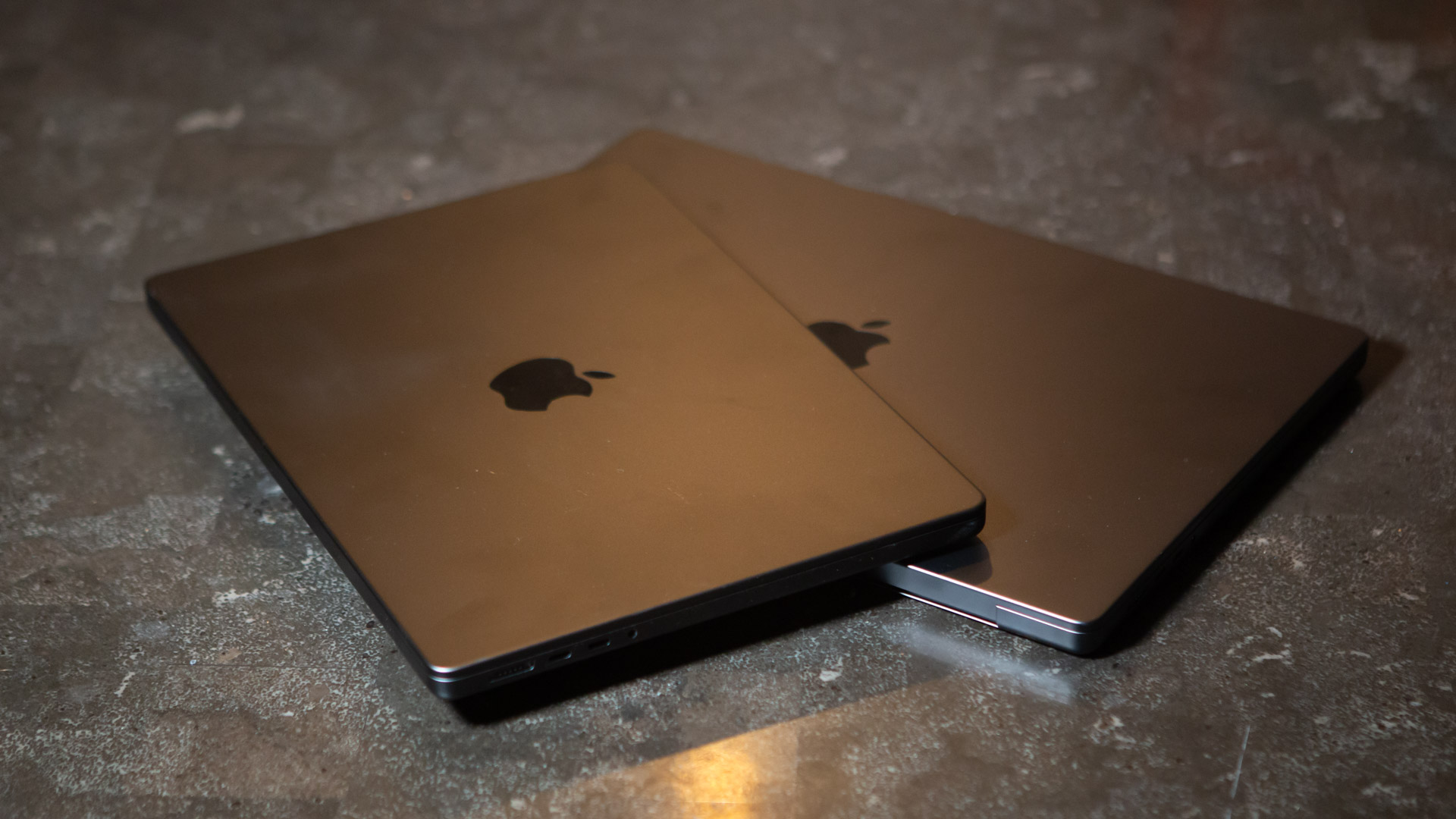 Apple MacBook Pro set for its biggest upgrade in many years
Apple MacBook Pro set for its biggest upgrade in many yearsIt's great news for Apple fans
By Sam Cross
-
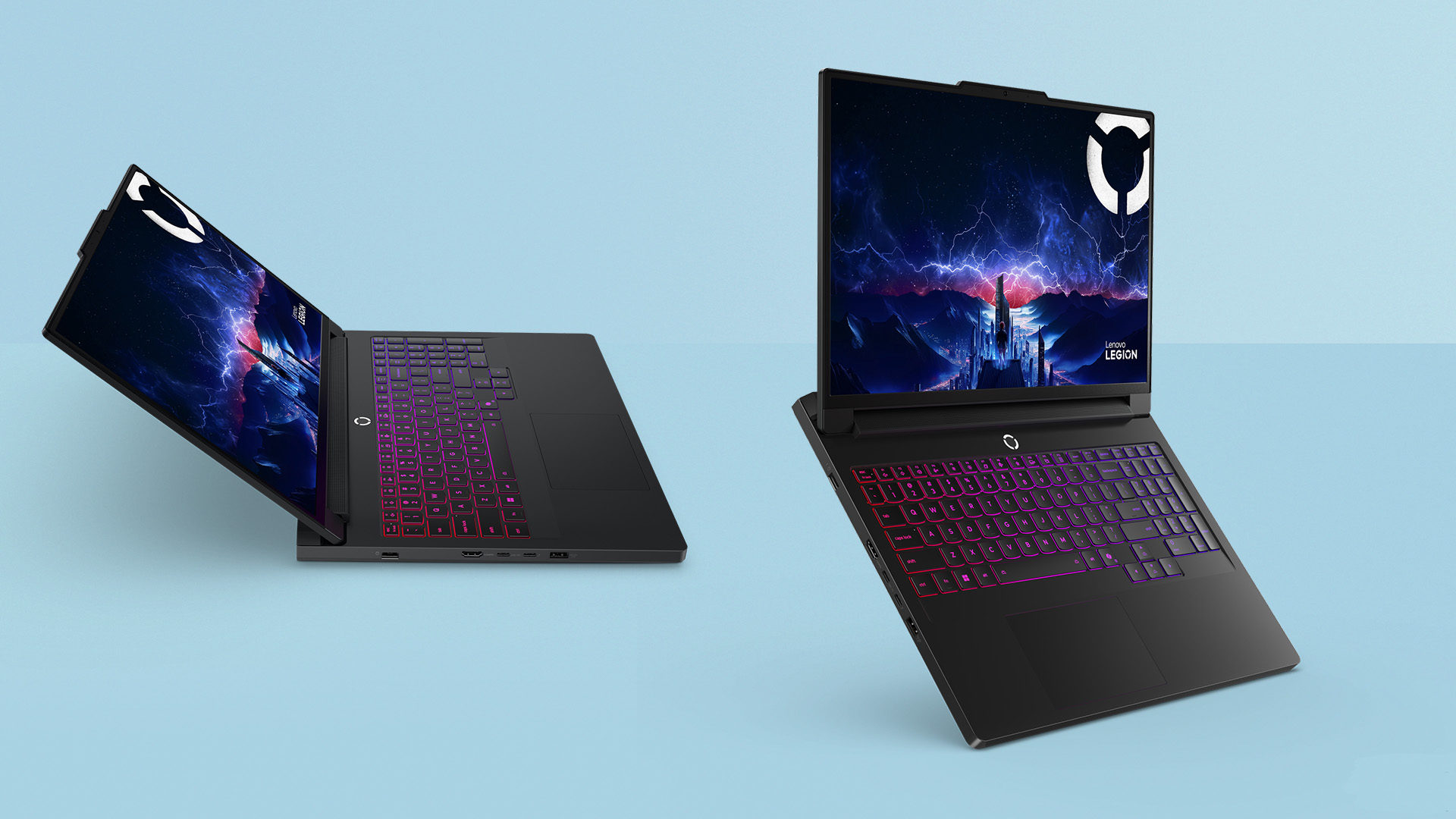 New Lenovo Legion Pro laptops look like total powerhouses
New Lenovo Legion Pro laptops look like total powerhousesThis is a serious gaming laptop with top-end specs
By Max Freeman-Mills
-
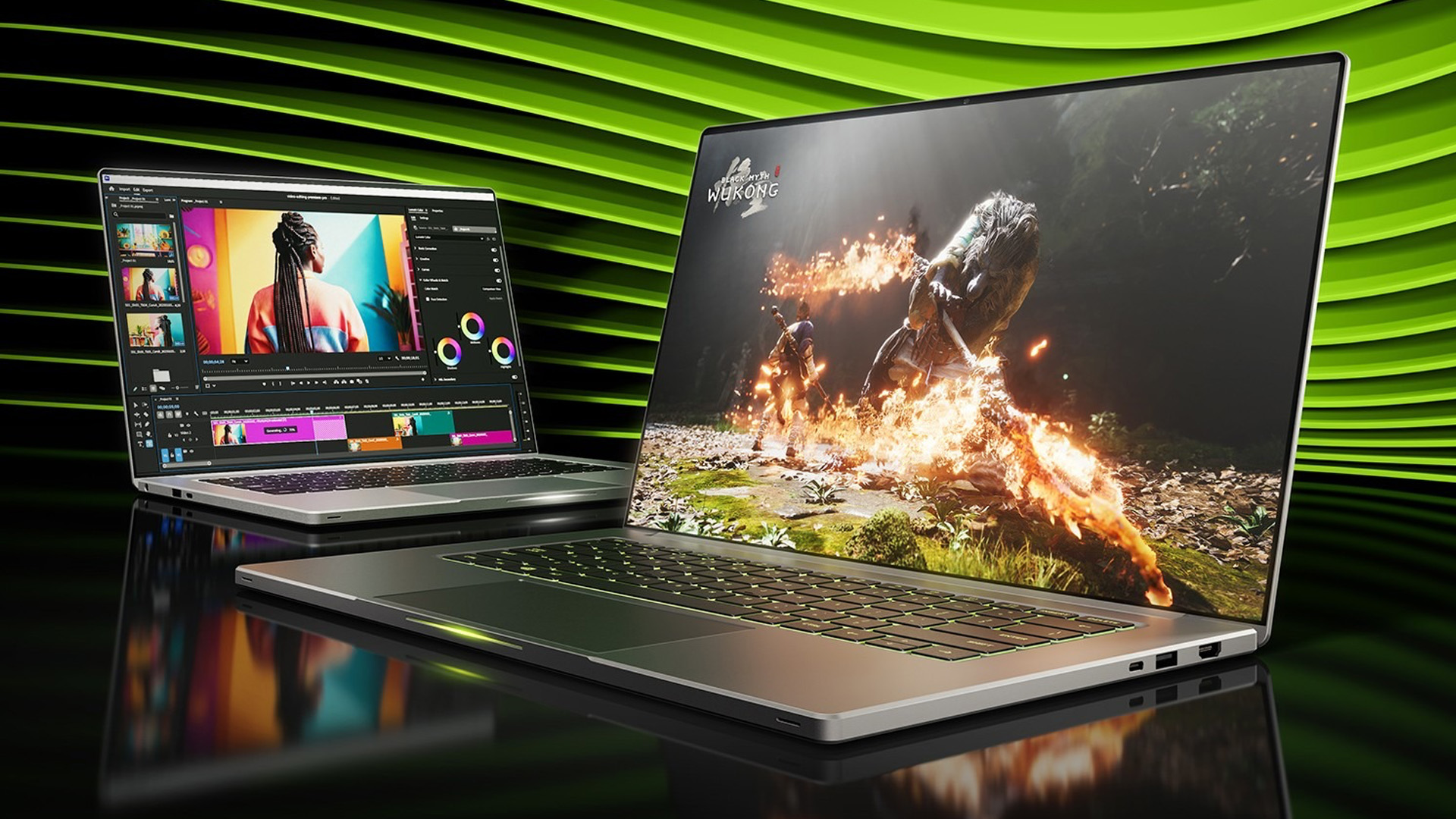 Gaming laptops that actually last? Nvidia's new cards promise a lot
Gaming laptops that actually last? Nvidia's new cards promise a lotThe GeForce RTX 50 series is here
By Max Freeman-Mills
-
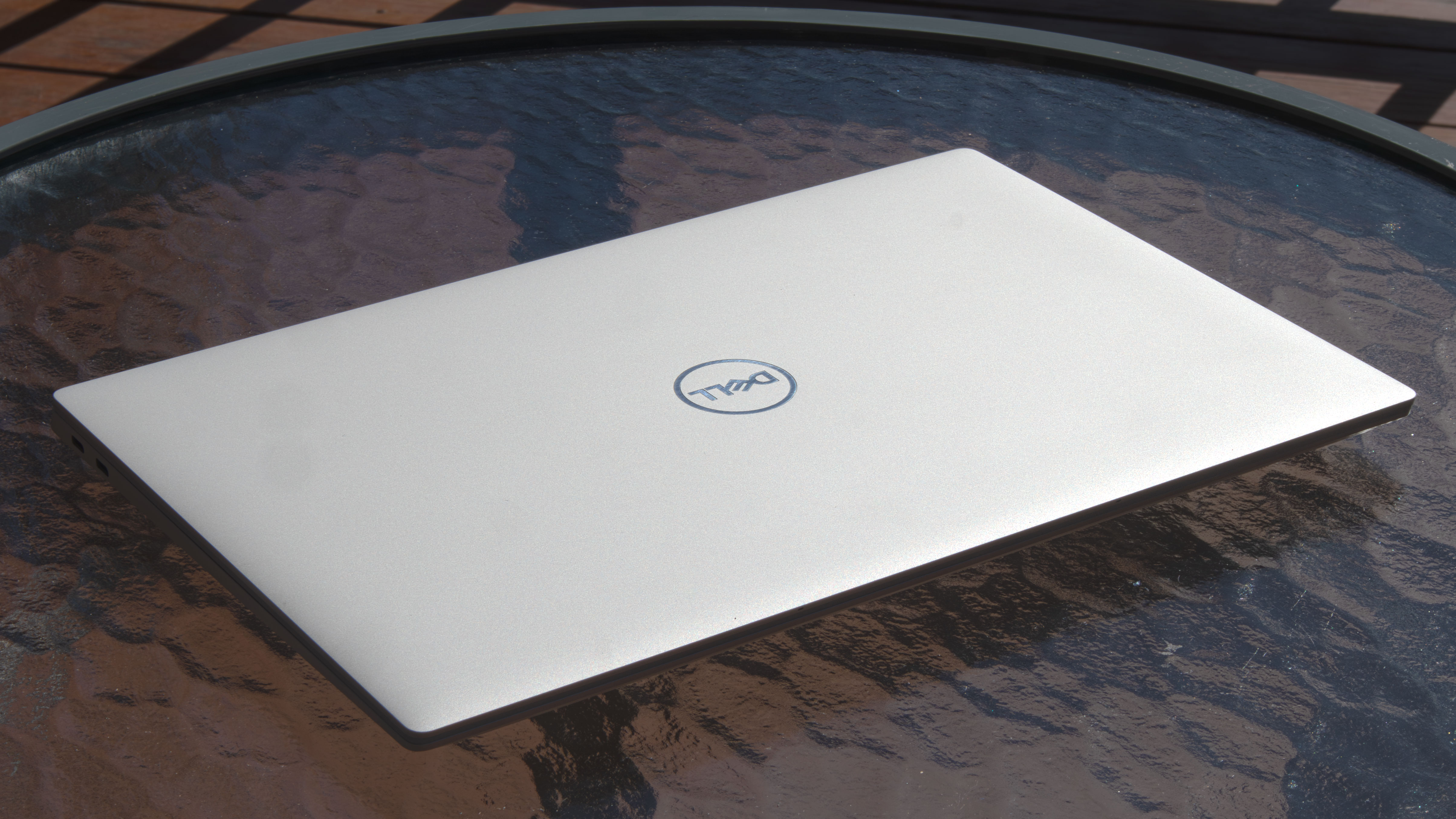 Dell kills its biggest brand in shock move
Dell kills its biggest brand in shock moveDell's CES news feels fairly massive
By Max Freeman-Mills

